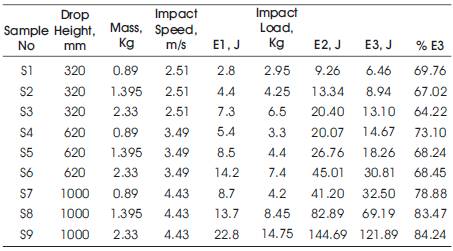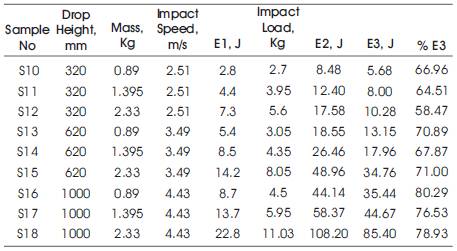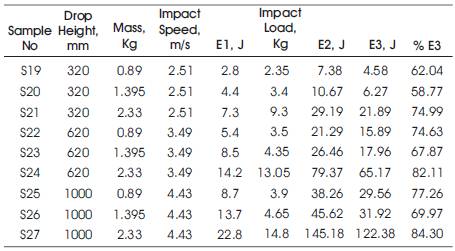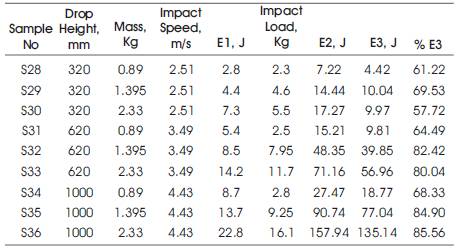
Table 1. The Materials/samples and the Sample Preparation Methods
This paper helps in understanding the influence of filler on the impact properties of Polyamides (Nylon6) and its composites. Generally, it is known that ABS possesses more toughness than Nylon6 and hence an effort has been made to make Nylon6 tougher than ABS material. The Nylon6 is reinforced with Glass Fibre and CaSiO3 (Calcium Silicate). Low velocity impact investigations have been carried out using a vertical drop- weight testing machine. The tests were conducted on the samples at different drop heights of 320 mm, 620 mm, 1000 mm and different drop weights of 0.89 kg, 1.395 kg and 2.33 kg. Impact measurement under the above said conditions for the materials A, B, C and D indicated that the addition of Glass Fibre and CaSiO3 led to a significant improvement in the impact strength of the polyamides.
Recent work has shown that due to the impacts that result during an accidental drop of a portable electronic product or any material, the proclivity for damage to the product can significantly be higher than in a single impact (Desmond Y.R. Chong., 2005). Impact testing provides engineers with information about a plastic's toughness. The tests measure the relative inclination of plastics to fracture under stresses applied at high speeds. Impact tests allow designers to compare the relative impact resistance under controlled laboratory conditions and, consequently, are often used for material selection or quality control. Traditional impact tests measure energy required to cause failure. However they do not provide good information about mechanism or nature of failure, such as brittle or ductile failure, because these tests are generally not instrumented to measure stress and strain in the specimen during the test. Impact resistance is one of the important mechanical properties of material. In Impact resistance test, impact resistance of material is tested under impact load to determine the tenacity or break resistance of polymer material under high-speed impact. Different material or different purpose may adopt different impact testing method. The commonly used methods include Izod and charpy impact test, falling weight impact test. (Brown, 2002) In falling weight impact test the impact resistance is measured by dropping known weights on the specimen from varying heights, or a test weight is raised to a selected height and then released. The flat specimen is placed on a support plate. This method does not require notching and is believed to be better for materials which exhibit ductile behavior. The impact energy is calculated based on weight dropped, height from which weight is dropped and geometry of the striker. The test is usually performed by incrementally raising a given weight higher, and then dropping till failure is observed. The test requires larger number of specimens and average impact energy is usually based on failure of half of the specimens for a given weight-height combination. Results for different materials can only be compared when specimen thickness is the same and the tests are conducted with similar striker, support plate, drop weight. Low-velocity impact has been an important study in material characterization due to its common occurrence in the real world. As an efficient way to perform low-velocity impact tests, drop-weight impact testing machines have been commonly used. However, because of the limit of the drop height, the impact velocity produced by the drop-weight impact testing machines is usually less than 10m/s (Guojing Li and Dahsin Liu., 2008). The inherent impact properties of a polymer may be modified simply by adding some form of filler. Polymeric impact modifiers may be incorporated to act as barriers or crack blunting regions to the advancing crack front. A good example of this is the addition of polybutadiene (PB) rubber to styrene-acrylonitrile (SAN) plastics to produce ABS. In other instances lower molecular weight plasticizers are added (for example to polyvinylchloride (PVC)) to improve the impact behavior. In the case of Nylons, increasing the moisture content significantly improves the toughness of the plastic. Very dry Nylons like Nylon 6 and 6-6 are quite brittle and sufficient time must be allowed for them to gain atmospheric moisture prior to testing if the 'equilibrium' impact strength is to be measured. The down-side of plasticization is that it results in loss of rigidity. Another way to improve the impact strength may be to use fibrous fillers that appear to act as stress transfer agents. Good coupling between the fibre and the polymer matrix is necessary for the effect to take place (Brown, 2002). Glass Fiber Reinforced Plastics (GFRP) have superior mechanical characteristics such as high specific strength, high endurance and high impact strength. Fiber-reinforced plastics are important class of PBMs. Fibers are added to improve not only mechanical properties but also tribological ones (Witold Brostow, Haley E. Hagg Lobland., 2007). Gnatowski, J and Koszkul., 2005., have shown that fillers such as fibers and calcium silicate have shown a momentous influence in the change of mechanical properties which includes even the impact properties of polyamide blends. Polyamides usually demonstrate a good overall presentation, including mechanical properties, heat resistance, wear resistance, chemical resistance and self lubricating and low friction coefficient, flame resistance, ease of processing, appropriate on glass fiber and other Fillers enhance the modification, improve performance and expand applications (Mithun V Kulkarni, et.al. 2011). M. Avalle, G. Belingardi, R. Montanini., 2001, have worked on Polyamide reinforced NORYL GTX, NORYL GTX a kind of foam having good efficiency and can dissipate a high quantity of energy for unit volume at maximum efficiency. These polyamide reinforced NORYL GTX have the capability to preserve its structural integrity and thus it is able to resist multiple impacts. In this research paper an effort has been made to understand the influence of fillers / reinforcement on the impact properties of polyamides (Nylon6) and its composites. It is also known that ABS possesses more toughness than Nylon6 and hence an effort has also been made to make Nylon6 tougher than ABS material by reinforcing Nylon6 with glass fibres and CaSiO3 (Calcium Silicate). Low velocity impact investigations have been carried out using a vertical drop- weight testing machine.
The materials / samples and the sample preparation methods have been described in Table 1. The NYLON6 and ABS were commercial products procured from M/s Sarvodaya polymers, Bangalore, India. The materials under study were fabricated using injection molding technique and hydraulically actuated press for fabricating Fiber reinforced polyamides. The materials under study were classified into four type's viz., Material A, Material B, Material C and Material D. A total of 36 specimens were used for testing.

Table 1. The Materials/samples and the Sample Preparation Methods
ABS pellets procured from M/s Sarvodaya polymers, Bangalore, India were used to prepare the Material A specimens and Nylon6 along with 5% CaSiO3 were used to prepare Material C specimens. The Specimens were prepared by heating the pellets in the barrel of an injection molding machine. The temperature was set at 1000 C initially for 30 minutes and as soon as the flow of the material started from the nozzle of the injection molding machine, the temperature of the barrel was reduced to 600 C. In the mean time the mold was also cleaned and preheated. The liquefied material was then injected into the mold and thus the Samples A and C were prepared. The prepared specimens were of 50mm x 50mm x 4mm dimensions.
Fiber and Calcium Silicate reinforced polyamide laminates (Material B and Material D) were fabricated using hydraulically driven press mould. Predetermined quantities of polyamide granules along with the fillers / reinforcements were fed into the mold cavity. The mold cavity was provided with a heating system. The heating system preheats the mould to 800C and the liquefied material was compacted into laminates. The laminates thus produced were of the 250 mm x 250 mm x 4mm dimensions, which were later machined to the test dimensions of 50mm x 50mm x 4mm.
Impact tests were conducted as per ASTM D5628 using a specially designed vertical drop weight testing system as shown in Figure 1. The main advantage of this drop weight testing machine is the economical factor in its design and fabrication. The machine consists of two main parts, the mechanical structure and the data acquisition system. The former is just a hammer, guided within a tube, which can impact the specimen. The latter consists of Load sensors for measuring the impact load. The samples (Figure 3) were supported between the two clamps as shown in the Figure 2. The impact test was conducted by dropping the hammer through different heights of 320 mm, 620 mm and 1000 mm and by varying the drop weights of 0.89 kg, 1.395 kg and 2.33 kg.

Figure 1. Vertical Drop Weight testing System

Figure 2. Sample Secured Between the Clamps

Figure 3. Materials Subjected to Impact Loading
All the samples were tested for different drop weights and drop heights. The data was recorded for each sample; the samples under study were classified into A, B, C and D (Table 1). The dart or the Impactor was dropped from the height of 320mm, 620mm, 1000mm and the drop weights used were of 0.89 kg, 1.395 kg, and 2.33 kg. For Different Drop weights and heights the Energy due to falling drop, E1, was calculated according to the kinetic energy relation (KE=0.5mv2). It is generally known that ABS possesses more toughness than Nylon6 material and hence an effort was made to produce a material much tougher than ABS. Hence, Nylon6 was reinforced with glass fiber and calcium silicate. The ABS (material A) and reinforced Nylon6 (material B, C, D) were subjected to drop weight impact test and also the influence of fillers/reinforcements have been studied.
As a first step in this research work the impact test was conducted on ABS material and the test results were recorded in Table 2, next the Nylon6 was reinforced with 30% glass fibers and it was observed that the E3 (Energy absorbed by the material) value of material A subjected to impact test had higher value than material B (Tables 2 & 3), but the usage of glass fiber as a reinforcement material and hence to improve the toughness of Nylon6 did not serve the purpose of improving toughness. Therefore, Nylon6 was further reinforced with 5% CaSiO3 (material C), the impact results on this material (Table 4) were surprising, it was observed that the E3 value of material C had increased compared to material A and B. But the E3 value of material C did not have an appreciable increase in the energy absorption as compared to material A. Therefore, material B was reinforced with 3% CaSiO3 and it was named as material D. It was observed that the material 'D' (Table 5) withstood the maximum impact load of 16.1 kg and also from the Table 5 it was observed that %E3 (Percentage energy absorbed) by the material D was more, followed by material C, A and B respectively. Whereas, when average of the %E3 was considered, material A absorbed maximum energy followed by material D, C and B with a value of 73.04%, 72.69%, 72.44% and 70.64% respectively. From the Table 3 and 5 it was found that due to the addition of Casio3 the E3(Energy absorbed by the material) had increased from 85.4J to 135.4J i.e., an increase in the energy absorption of 36.8% was observed in material D in comparison to material B. similarly, from the Table 3 and 4 it was found that the E3(Energy absorbed by the material) had increased from 85.4J to 122.38J i.e., an increase in the energy absorption of 30.22% was observed in material C in comparison to material B. The increase in the energy absorption in material D and C can be attributed to the inclusion of CaSiO3 as CaSiO3 has the ability to enhance and improve dimensional stability and thus improve the impact resistance.
Energy due to impact load, E2, of material B was 108.2J whereas of material C was 145.18J. This indicated that addition of CaSio3 was beneficial over addition of glass fibers in areas where the materials were constantly subjected to impact loads. One more advantage of adding CaSiO3 is the reduction in the production and manufacturing cost. The reduction in impact energy of material B (Nylon6 + 30%GF) confirms with that of the results obtained by Abdul Razak Rahmat et al. 2009. The addition of glass fiber to the polyamide reduces the toughness and increases the stiffness of the material. It is to be noted that the fiber length also has a significant effect in the improvement of impact properties of the glass fiber materials. Figure 4 shows the comparison made between various materials used in the study for the absorption of Impact energy.

Table 2. Impact Test result for Material A (ABS)

Table 3. Impact Test Data for Material B (Nylon6 + 30% GF)

Table 4. Impact Test Data for Material C (Nylon6 + 5% CaSiO3)

Table 5. Impact Test Data for Material D (Nylon6 + 30% GF material + 3% CaSiO3)

Figure 4. Impact Load on Material's A, B, C, and D for different falling weights and heights
Low velocity Impact test was conducted successfully on four different materials viz., ABS, Nylon6 + 30%GF, Nylon6 + 30% GF + 3%CaSiO3 and Nylon6 + 5% CaSiO3. A comparison of impact values was made in between these materials. The tests showed that under the drop weight hammer impact, the fiber and the CaSiO3 reinforced material C (Nylon6 + 30%GF + 3%CaSiO3) exhibited a good improved Impact resistance over fiber reinforced material B (Nylon6 + 30%GF). The application of the CaSio3 as filler significantly influenced the change in Impact properties of the materials under the investigation.